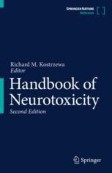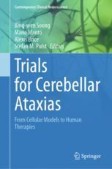Search
Search Results
-
Endogenous Kynurenic Acid and Neurotoxicity
Tryptophan metabolism along with kynurenine pathway yields a number of neuroactive compounds. Among kynurenine derivatives, neuroprotective kynurenic...
-
The role of glutamate transporter-1 in firing activity of locus coeruleus neurons and nociception in rats
Locus coeruleus (LC) is considered to be the main source of norepinephrine in the central nervous system (CNS) and plays important role in relieving...

-
Characterization of Aripiprazole Uptake Transporter in the Blood-Brain Barrier Model hCMEC/D3 Cells by Targeted siRNA Screening
AimIdentification of blood-brain barrier (BBB) uptake transporters is a major challenge in the research and development of central nervous system...

-
Characterization of the substrate binding site of an iron detoxifying membrane transporter from Plasmodium falciparum
BackgroundPlasmodium species are entirely dependent upon their host as a source of essential iron. Although it is an indispensable micronutrient,...

-
Molecular Basis of Coupled Transport and Anion Conduction in Excitatory Amino Acid Transporters
Glutamate is the major excitatory neurotransmitter in the mammalian central nervous system. After its release from presynaptic nerve terminals,...

-
Amino Acids in Beef Cattle Nutrition and Production
Proteins have been recognized for a long time as an important dietary nutritional component for all animals. Most amino acids were isolated and...
-
Interaction of crown ethers with the ABCG2 transporter and their implication for multidrug resistance reversal
Overexpression of ABC transporters, such as ABCB1 and ABCG2, plays an important role in mediating multidrug resistance (MDR) in cancer. This feature...

-
Amino Acids in Autophagy: Regulation and Function
Autophagy is a dynamic process in which the eukaryotic cells break down intracellular components by lysosomal degradation. Under the normal...
-
Homocysteine and Folic Acid Metabolism
Homocysteine (Hcy) and folate metabolism plays a crucial role in maintaining the overall human health. Hcy is a non-proteinogenic amino acid...
-
Redox proteomics of PANC-1 cells reveals the significance of HIF-1 signaling protein oxidation in pancreatic ductal adenocarcinoma pathogenesis
BackgroundProtein cysteine oxidation is substantially involved in various biological and pathogenic processes, but its implications in pancreatic...

-
Quinolinic Acid and Related Excitotoxins: Mechanisms of Neurotoxicity and Disease Relevance
There are many ways in which neuronal damage can be produced in the brain, including the overactivation of depolarizing receptors, exposure to high...
-
Glutaric Acid Neurotoxicity: Mechanisms and Actions
Glutaric acid (GA) is found in high concentrations in glutaric acidemia type 1 (GA 1), an inherited neurometabolic disorder of intoxication...
-
Minimizing the DILI potential of carboxylic acid-containing drugs: a perspective
Drugs containing carboxylic acid moieties are associated with a range of toxicities, some related directly to their pharmacology and others to the...

-
Metabolic Treatments of Cerebellar Ataxia
Metabolic causes of cerebellar ataxia encompass all categories of inherited metabolic diseases, i.e., accumulation and deficiency of small or complex...
-
Taurine, an essential β-amino acid insulates against ketamine-induced experimental psychosis by enhancement of cholinergic neurotransmission, inhibition of oxidative/nitrergic imbalances, and suppression of COX-2/iNOS immunoreactions in mice
Cholinergic, oxidative, nitrergic alterations, and neuroinflammation are some key neuropathological features common in schizophrenia disease. They...

-
3-Hydroxyglutaric Acid as a Neurotoxin
3-Hydroxyglutaric acid (3HGA) accumulates predominantly in the brain and biological fluids of individuals affected by glutaric acidemia type 1 (GA...
-
Dual contribution of the mTOR pathway and of the metabolism of amino acids in prostate cancer
BackgroundProstate cancer is the leading cause of cancer in men, and its incidence increases with age. Among other risk factors, pre-existing...

-
Neuregulin-1 inhibits CoCl2-induced upregulation of excitatory amino acid carrier 1 expression and oxidative stress in SH-SY5Y cells and the hippocampus of mice
Excitatory amino acid carrier 1 (EAAC1) is an important subtype of excitatory amino acid transporters (EAATs) and is the route for neuronal cysteine...

-
Retinoic acid signaling acts as a rheostat to balance Treg function
Regulatory T cells (Tregs) promote immune homeostasis by maintaining self-tolerance and regulating inflammatory responses. Under certain inflammatory...

-
Silica Nanoparticles Decrease Glutamate Uptake in Blood–Brain Barrier Components
Glutamate is the major excitatory amino acid in the vertebrate brain, playing an important role in most brain functions. It exerts its activity...

